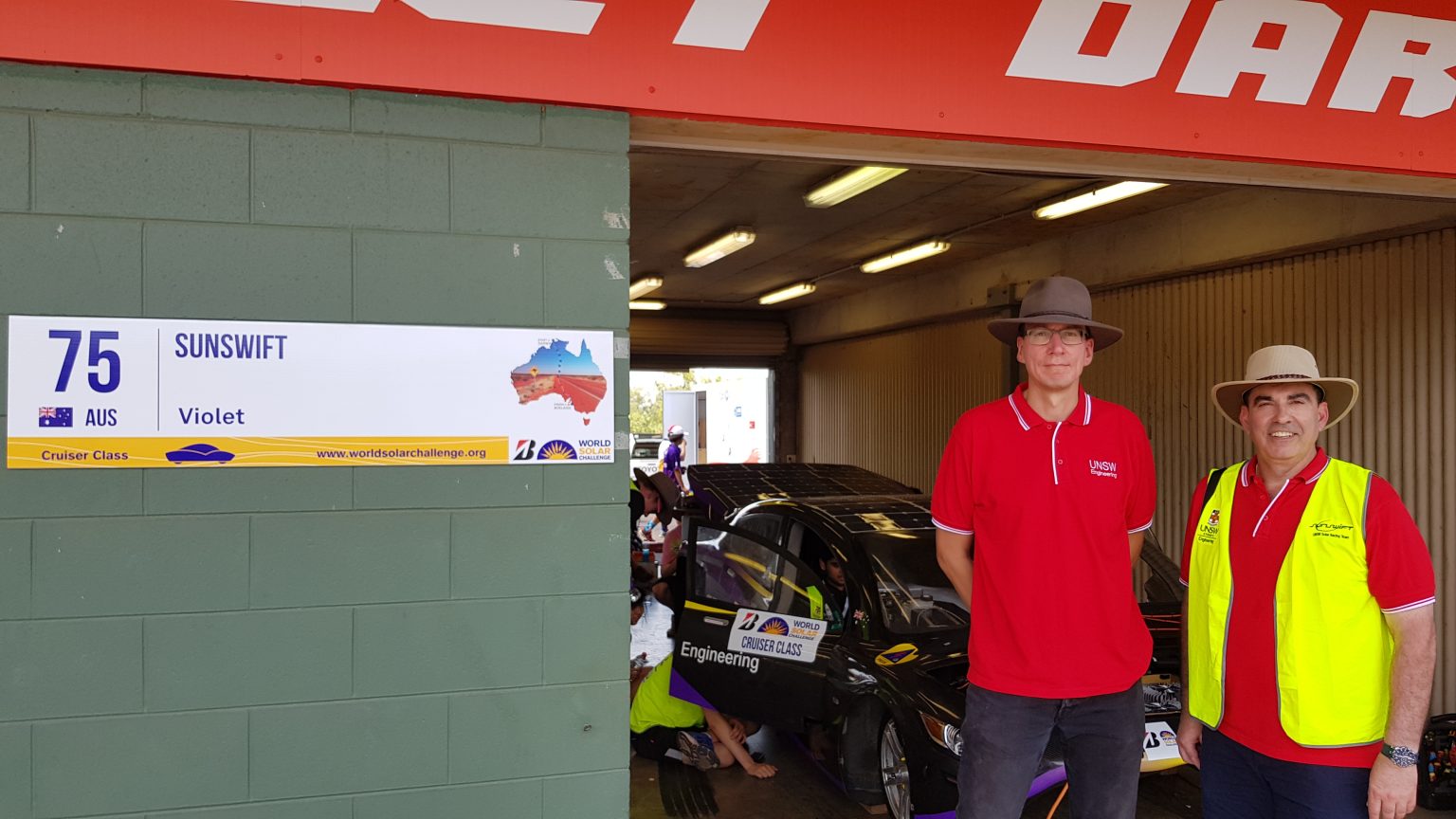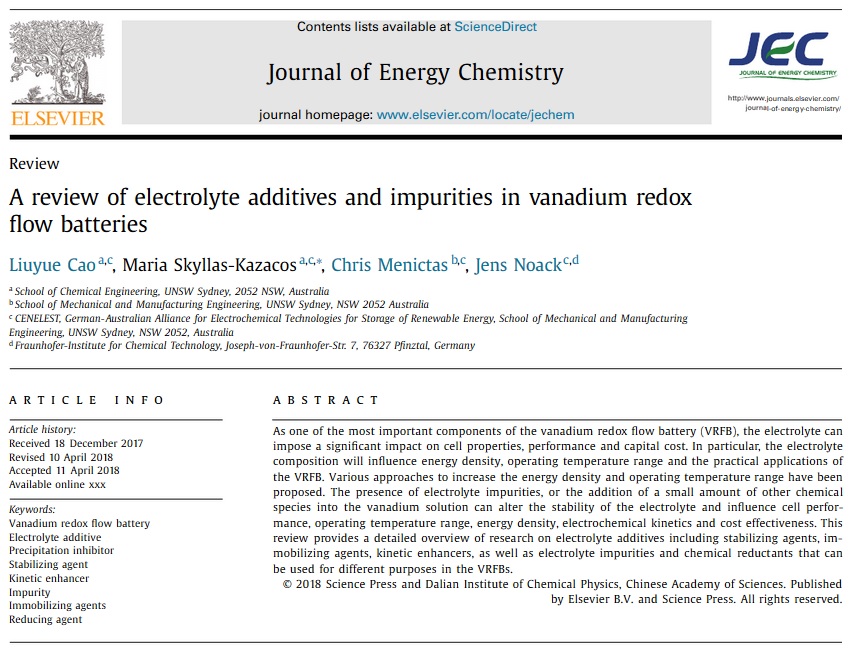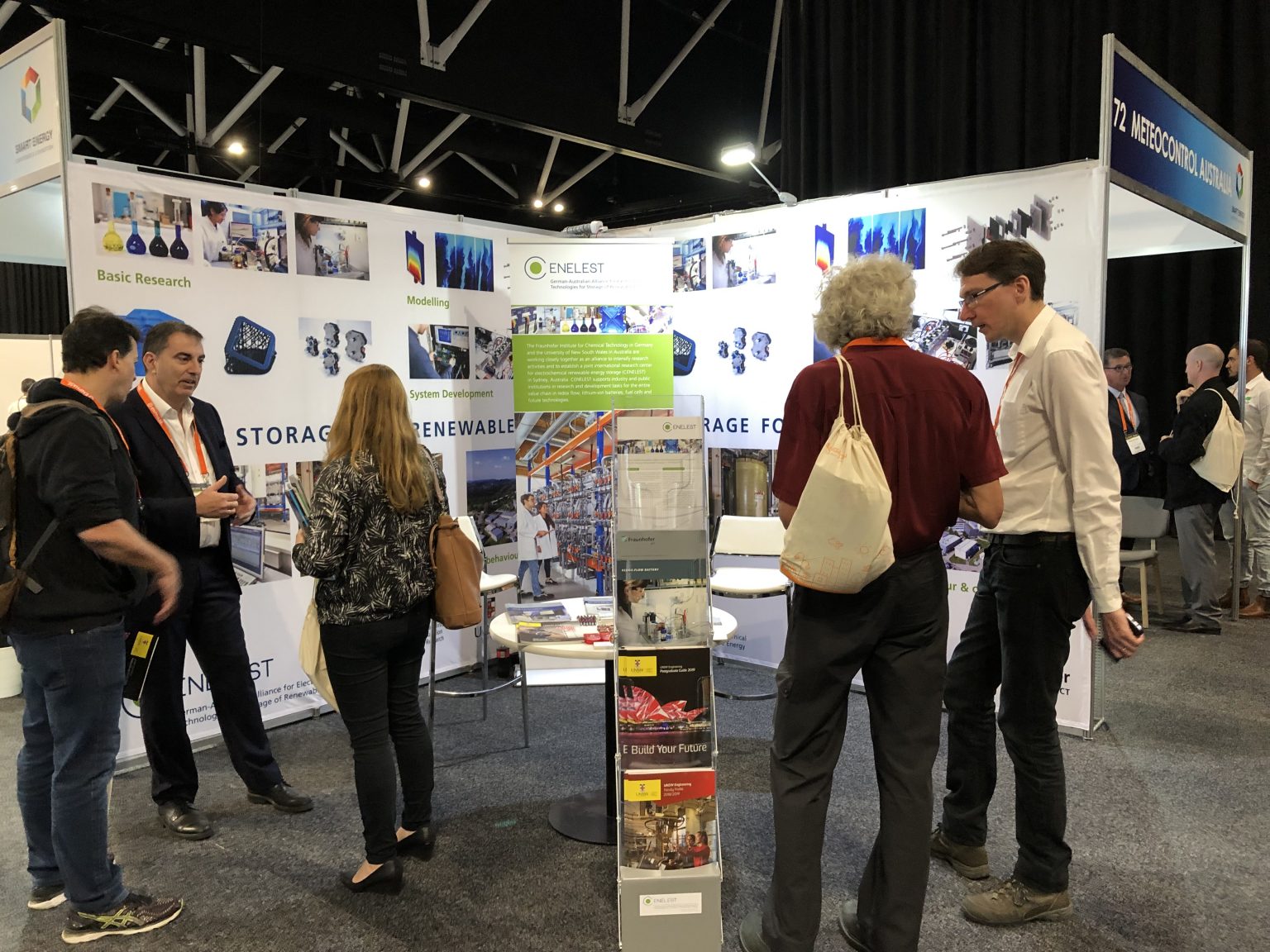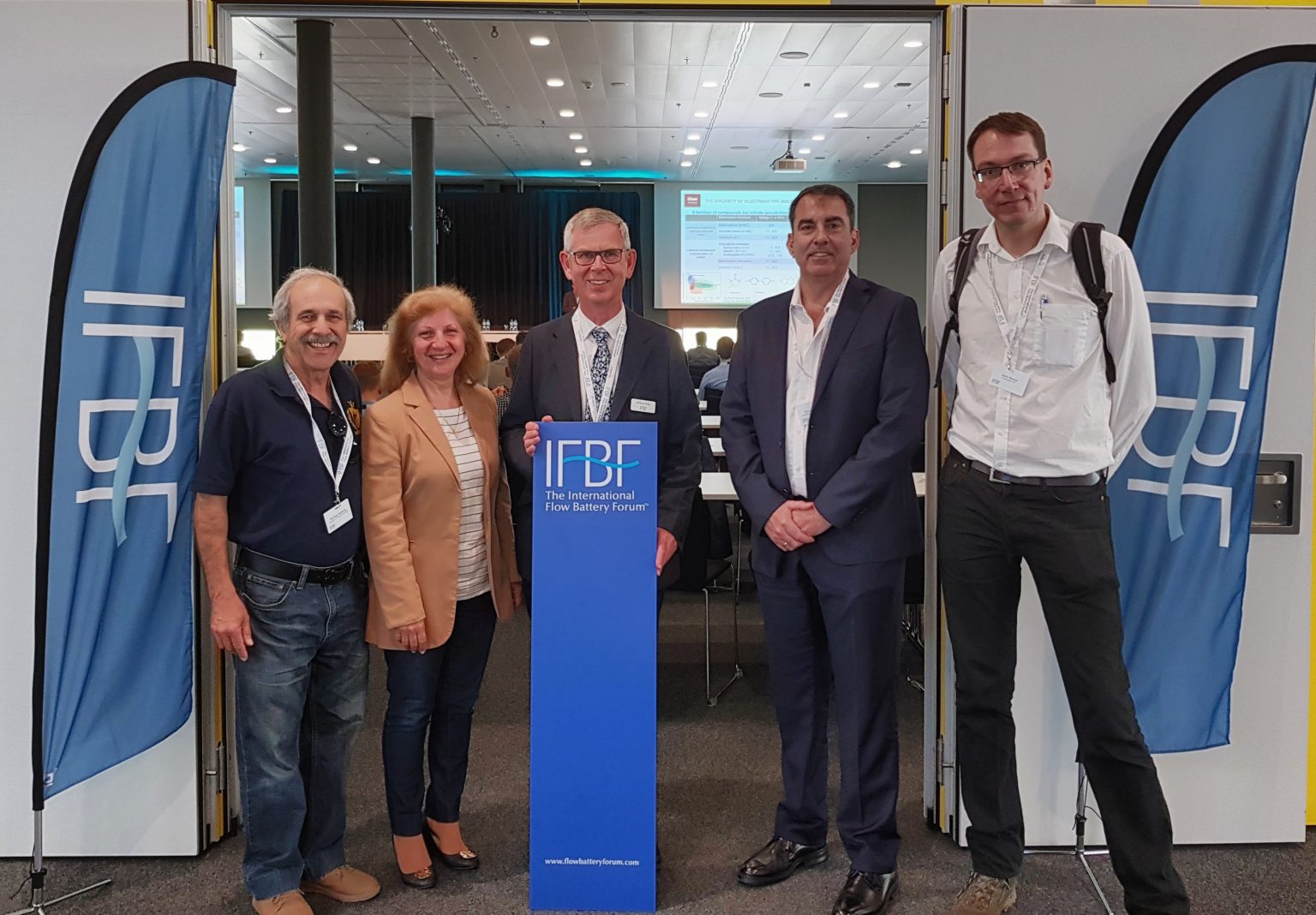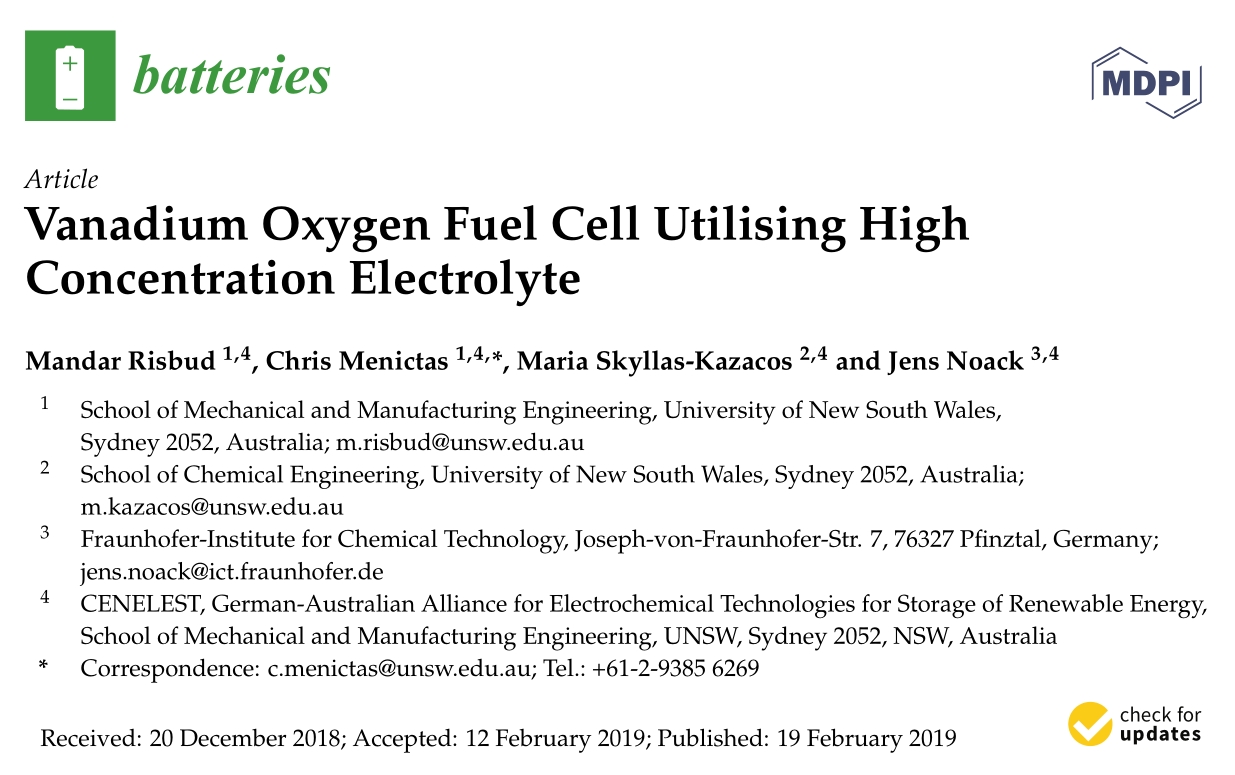Chris and Jens together with the team Sunswift of the UNSW accompanied the preparations and the qualification for the Bridgestone World Solar Challenge in Darwin/Australia.
The World Solar Challenge is a car race in which solar-powered vehicles in different classes have to drive through the entire continent of Australia from Darwin to Adelaide. The distance is over 3000 km under the strict climatic conditions of the Australian outback.
The effect of the counter ion for Vanadium Redox Flow Batteries
We have published an open access article about the effect of the counter ion in the electrolyte of Vanadium Redox Flow Batteries (VRFB). Sulphate and pure chloride based electrolytes have been compared regarding its electrochemical properties in half-cells and batteries. We show here that the usage of pure chloride based electrolyts results in lower performance and a reaction of V(V) with chlorine.
Vanadium Electrolyte for All-Vanadium Redox-Flow Batteries: The Effect of the Counter Ion
N. Roznyatovskaya, J. Noack, H. Mild, M. Fühl, P. Fischer, K. Pinkwart, J. Tübke, M. Skyllas-Kazacos, Batteries 2019, 5, 13 (OPEN ACCESS)
CENELEST attended the 2019 Smart Energy Conference and Exhibition
Several CENELEST members took part in this year’s Smart Energy Conference and Exhibition in Sydney/Australia. In addition to presentations, numerous companies were represented as exhibitors at the two-day event. CENELEST participated as an exhibitor with its own booth. During the two days countless discussions were held and numerous new contacts from the international and national Australian sector of energy storage were established.
CENELEST visited 9th IFBF
CENELEST attended the ninth International Flow Battery Forum (IFBF) in Lausanne/Switzerland this July. Chris had a lecture about CENELEST and scientific results of the cooperation which will be reported separately later on. Jens N. participated in the discussion on standards for vanadium flow battery electrolyte and presented the current state of developments in the field of international standardization in the IEC (International Electrotechnical Commission).
Maria gave an extremely interesting lecture on the situation of the Australian energy market. As always at this worldwide most important event in the field of redox flow batteries, old acquaintances were met again, new acquaintances were met and many discussions about energy storage were held.
Vanadium Oxygen Fuel Cell utilising high concentration electrolyte
We published an open access article about a Vanadium Oxygen Fuel Cell (VOFC) utilising up to 3.6 mol/L high concentration vanadium electrolyte. Compared to Vanadium Redox Flow Batteries, VOFCs allow much higher theoretical energy density by the replacement of the positive electrolyte with an oxygen (air) electrode. The replacement allows the usage of higher concentrated vanadium electrolytes which further increases the theoretical energy density. We present here a VOFC with 3.6 M vanadium solution, which has a theoretical maximum energy density of 146 Wh/L.
Vanadium Oxygen Fuel Cell Utilising High Concentration Electrolyte
M. Risbud, C. Menictas, M. Skyllas-Kazacos, J. Noack, Batteries 2019, 5(1), 24 (OPEN ACCESS)

